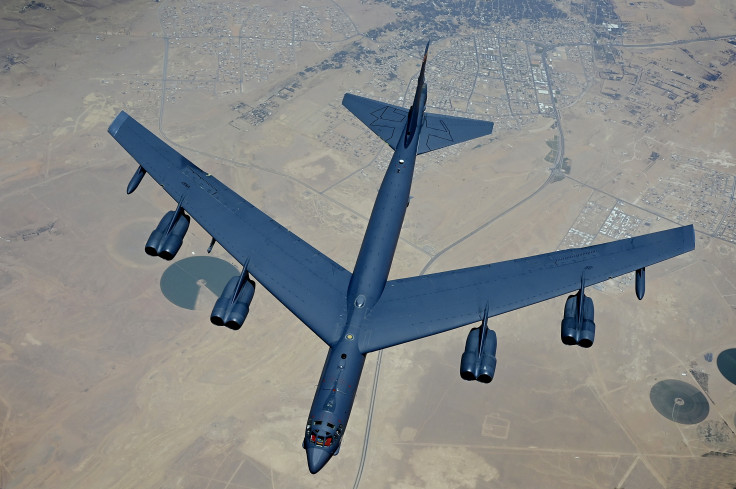US Flies Nuclear-Capable B-52 Bombers Over Middle East Amid Rising Tensions With Iran
KEY POINTS
- Warplanes from Israel, U.K., Kuwait and Saudi Arabia flew with the B-52s
- B-52 is a long-range, heavy bomber capable of carrying nuclear bombs
- Tension running high after Iran's recent attempts to seize maritime drones
In an apparent show of force, the U.S. military Sunday flew a pair of nuclear-capable B-52 Stratofortresses long-distance bombers over the Middle East at a time of heightened tension with Iran, which twice last week seized and later released U.S. surface drones in the Red Sea. It is the fourth such mission by the U.S. bomber task force to be conducted this year.
The B-52 bombers took off from the Royal Air Force base at Fairford, England, on the mission and flew over the eastern Mediterranean, the Arabian Peninsula and the Red Sea, before departing the region. Along with aircraft of United Kingdom, Kuwait and Saudi Arabia, Israel also joined in the multinational mission with three Israeli F-16 fighter jets accompanying the American bombers.
Emphasizing that missions like this showcase the ability to combine forces to deter and, if necessary, defeat adversaries, Lt. Gen. Alexus Grynkewich, a top U.S. Air Force officer in the Middle East in a statement said: "Threats to the U.S. and our partners will not go unanswered."
In June, two B-52 bombers carried out a nine-hour presence patrol over the East Mediterranean, Arabian Peninsula and Red Sea. In late March, a B-52 flew over the Middle East along with American F-22s and aircraft from nine other countries. Similarly, in early March, B-52 bombers flew over the region days after an explosion hit an Israeli-owned cargo ship in the Gulf of Oman which the country blamed on "asymmetric activity by Iranian military."
The B-52, is a long-range, heavy bomber capable of flying at high subsonic speeds at altitudes of up to 50,000 feet carrying nuclear or precision guided conventional weapons. It is highly effective when used for ocean surveillance and in two hours, two B-52s can monitor 140,000 square miles of ocean surface. Inducted into service in 1952, the bomber is set to get a major facelift with new radar and engine.
Iranian navy had seized and later released two American surface drones in the Red Sea on Thursday, accusing them of blocking international waters and endangering maritime safety. Iran has been building up its naval presence in the Red Sea, near the coast of Yemen where Tehran backs the Houthi Movement and also repeatedly warned the U.S. about its military activities in the Gulf.
The tension between the U.S. and Iran is high since 2018 when then President Donald Trump withdrew from the landmark nuclear deal, which would have ensured the lifting of sanctions on Tehran in exchange for limits on its uranium enrichment. Efforts to revive the deal since remain stalled. Although, Iran says that its nuclear program is for peaceful purposes, experts warn Tehran has enough 60%-enriched uranium to reprocess into fuel for at least one nuclear bomb. The U.S. military had also recently launched retaliatory strikes on Iran-backed forces in Syria.

© Copyright IBTimes 2024. All rights reserved.






















